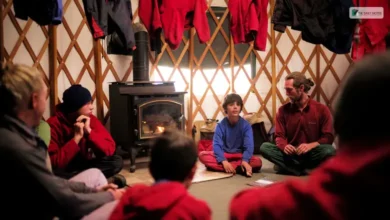Myrtle Gonzalez: A Trailblazer in the Silent Film Era

Introduction
In the annals of early Hollywood, few stars shine as brightly yet remain as overlooked as Myrtle Gonzalez. Born at the turn of the 20th century, Gonzalez’s career spanned a critical era in film history, marking her as one of the pioneering figures in the silent film era. This article delves into the life of Myrtle Gonzalez, exploring her early years, rise to fame, contributions to cinema, and her enduring legacy in an industry that was just finding its feet.
Early Life and Background
Myrtle Gonzalez was born on September 28, 1891, in Los Angeles, California. Growing up in a vibrant and culturally diverse city, Gonzalez was exposed to the performing arts at a young age. Her father, a musician, and her mother, a stage actress, were instrumental in nurturing her artistic talents. Gonzalez’s early life was marked by a deep immersion in the arts, setting the stage for her future career in cinema.
Rise to Stardom
Gonzalez’s entry into the world of acting was almost predestined. With her striking looks and natural acting ability, she quickly made a name for herself in the nascent film industry. Her first foray into film came in the early 1910s, a time when the movie industry was still in its infancy. Gonzalez’s talent shone through in these early roles, and she soon found herself as one of the first Latin American actresses to gain prominence in Hollywood.
Pioneering Roles and Contribution to Cinema
Myrtle Gonzalez’s filmography is a testament to her versatility as an actress. She was known for her roles in films like “The Greater Law” and “The Love Route”, where she often portrayed strong, independent women. This was a departure from the typical roles offered to women in that era, making Gonzalez a pioneer in challenging gender norms on screen. Her performances not only entertained but also inspired a generation of women and minorities in the film industry.
Challenges and Triumphs
Despite her success, Gonzalez’s career was not without challenges. As a woman and of Hispanic descent, she faced the dual hurdles of gender and racial discrimination. Yet, Gonzalez’s resilience and talent allowed her to overcome these barriers, paving the way for future generations of actors and actresses from diverse backgrounds.
Personal Life and Untimely Demise
Gonzalez’s personal life was as eventful as her career. She married and divorced twice, all while maintaining her status as a leading lady in Hollywood. Tragically, her life was cut short at the age of 27 due to complications from the Spanish Flu pandemic in 1918. Her untimely death was a significant loss to the film industry.

Legacy and Influence
More than a century after her passing, Myrtle Gonzalez’s legacy endures. She is remembered not just as a talented actress but as a trailblazer who broke barriers and opened doors for others. Gonzalez’s contribution to cinema goes beyond her film roles; she is a symbol of perseverance and change in an industry that was, and often still is, resistant to diversity.
Conclusion
Myrtle Gonzalez’s story is one of talent, determination, and pioneering spirit. Her contributions to the silent film era laid the groundwork for future generations of actors and actresses, particularly those from underrepresented communities. As we look back on the history of cinema, Gonzalez’s name stands out as a beacon of progress and inspiration, reminding us of the power of film to transcend boundaries and effect change.




